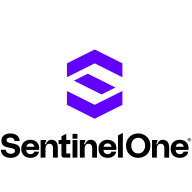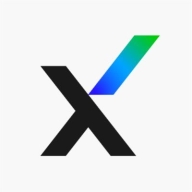
![Threat Stack Cloud Security Platform [EOL] Logo](https://images.peerspot.com/image/upload/c_scale,dpr_3.0,f_auto,q_100,w_64/o0no0it6ybl6satjcxomcblsgmd6.png)

Threat Stack Cloud Security Platform [EOL] and Trellix Cloud Workload Security compete in cloud security, with Trellix having the upper hand due to its comprehensive functionality, providing a higher return on investment and robust features.
Features: Threat Stack provides instantaneous visibility, efficient threat detection, and effective customer support. Trellix offers advanced workload protection, precise threat intelligence, and superior automation features, supporting enterprises that need comprehensive security.
Ease of Deployment and Customer Service: Threat Stack ensures easy deployment with reliable assistance. Trellix, though offering a more complex deployment, compensates with strong post-deployment support, benefiting companies facing intricate security challenges.
Pricing and ROI: Threat Stack is attractive to budget-conscious buyers with competitive pricing and substantial ROI. Trellix, despite a higher price, justifies its cost through superior features that significantly enhance long-term ROI for businesses requiring extensive security.


| Company Size | Count |
|---|---|
| Small Business | 43 |
| Midsize Enterprise | 21 |
| Large Enterprise | 53 |
| Company Size | Count |
|---|---|
| Small Business | 2 |
| Midsize Enterprise | 5 |
| Large Enterprise | 2 |
SentinelOne Singularity Cloud Security offers a streamlined approach to cloud security with intuitive operation and strong integration capabilities for heightened threat detection and remediation efficiency.
Singularity Cloud Security stands out for its real-time detection and response, effectively minimizing detection and remediation timelines. Its automated remediation integrates smoothly with third-party tools enhancing operational efficiency. The comprehensive console ensures visibility and support for forensic investigations. Seamless platform integration and robust support for innovation are notable advantages. Areas for development include improved search functionality, affordability, better firewall capabilities for remote users, stable agents, comprehensive reporting, and efficient third-party integrations. Clarity in the interface, responsive support, and real-time alerting need enhancement, with a call for more automation and customization. Better scalability and cost-effective integration without compromising capabilities are desired.
What are SentinelOne Singularity Cloud Security's standout features?SentinelOne Singularity Cloud Security is deployed in industries needing robust cloud security posture management, endpoint protection, and threat hunting. Utilized frequently across AWS and Azure, it assists in monitoring, threat detection, and maintaining compliance in diverse environments while providing real-time alerts and recommendations for proactive threat management.
Threat Stack Cloud Security Platform [EOL] offers robust security features including endpoint monitoring, rule customization, and integration capabilities, with easy connectivity to cloud services like Docker and AWS.
Threat Stack Cloud Security Platform [EOL] provides tools for enhancing security visibility across cloud infrastructure. It supports AWS and Docker integration, facilitating efficient threat detection and management. Users appreciate its capability to configure customizable alerts and monitor endpoints, sessions, API interactions, and cloud services. However, there are areas needing improvement, such as better serverless environment support and reduced alert frequency. The platform services smaller organizations by compensating for limited security resources with its comprehensive monitoring and auditing tools.
What are the key features?In specific industries, Threat Stack Cloud Security Platform [EOL] is utilized for its strength in monitoring cloud infrastructure and preventing unauthorized access. Organizations in fields where cloud operations are critical use it for regular audits and monitoring. Its capabilities in threat management are leveraged to maintain secure operations and compliance, especially where there is no dedicated security team.
Trellix Cloud Workload Security is a comprehensive security solution designed to protect cloud workloads from advanced threats. It provides real-time visibility and control over cloud workloads, enabling organizations to quickly detect and respond to threats.
The most useful functionality of the solution includes automated threat detection, continuous compliance monitoring, and workload protection. With these features, organizations can ensure their cloud workloads are secure and compliant with industry regulations. Trellix Cloud Workload Security helps organizations reduce the risk of data breaches, protect sensitive data, and ensure compliance with regulatory requirements.
We monitor all Cloud Workload Protection Platforms (CWPP) reviews to prevent fraudulent reviews and keep review quality high. We do not post reviews by company employees or direct competitors. We validate each review for authenticity via cross-reference with LinkedIn, and personal follow-up with the reviewer when necessary.